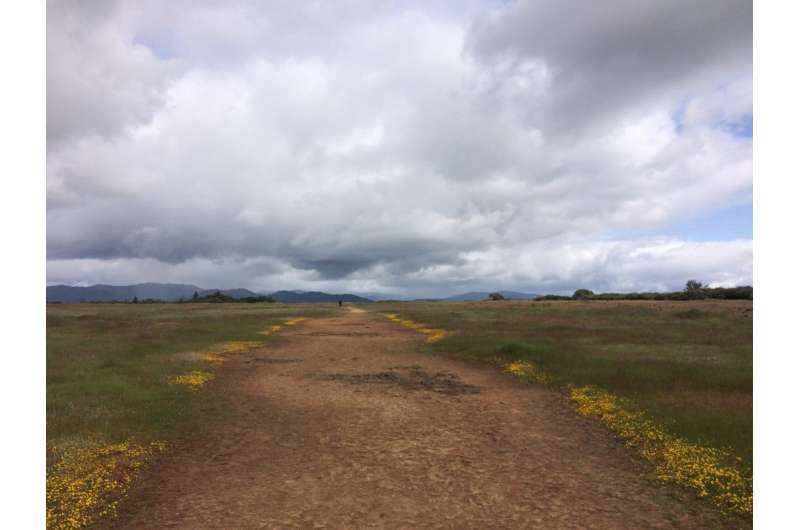Tracing a plant's steps: Following seed dispersal using chloroplast DNA

Plants spread their seeds across the landscape to colonize new areas, but it's difficult and expensive for biologists to trace their movements. Now, researchers at Portland State University have developed a new technique to sequence chloroplast DNA from hundreds of plants at once, to learn more about how plant populations move.
The ability to establish new populations is vital for plant species looking to expand their range. For many decades, biologists have studied the process of seed dispersal, but genetic studies of plant populations have always been hampered by the difficulty of distinguishing whether genetic differences were the result of the movement of pollen (male genes) or the seeds themselves (containing the DNA of both parents). To meet this challenge, researchers can sequence the DNA of chloroplasts, the green structures in plant cells which perform photosynthesis. The development of a new tool, CallHap, published in Applications in Plant Sciences, has made it cheaper and easier to sequence the chloroplast genomes of large numbers of plants and accurately track seed dispersal across landscapes.
Because chloroplasts are normally only inherited from the female plant, their genetic variability can be used to trace seed dispersal without interference from pollen. Chloroplasts evolve slowly, so researchers use next-generation sequencing to look for subtle differences in their genomes to determine how two plants from different populations might be related. To reduce the costs of these studies, Professor Mitchell Cruzan and colleagues Dr. Brendan Kohrn and Jessica Persinger developed CallHap, which can be used to simultaneously sequence many plants and separate out the data afterwards.
To use CallHap, researchers must first obtain a reference genome sequence for their target species, either from previously published work or by sequencing the DNA of a single plant. Next, they should sequence the chloroplasts of a few plants individually and align them to the reference genome to create the basic database used by the program. CallHap can then be used to sequence hundreds of individuals at once, says Cruzan: "We were motivated to develop this method to provide sequence data from whole chloroplast genomes for large numbers of plants, to generate the large sample sizes needed for robust estimates of seed dispersal."
Cruzan and his team tested CallHap on artificial genetic networks before using it to investigate the seed dispersal rate of a daisy, California goldfields (Lasthenia californica), growing in southern Oregon, USA. "We were quite pleased with the low error rate we detected," enthused Cruzan, who has since tested the program on four other species. Their results suggested that the chloroplasts of up to 200 plants could be sequenced together and accurately separated by CallHap, significantly reducing the costs of these population genetic studies.
CallHap has already given some interesting insights into seed dispersal. Cruzan elaborates, "In the L. californica study, we found strong differences in the chloroplast genomes of populations separated only by a few dozen meters, suggesting a surprisingly short seed dispersal distance for this species." They have since collected chloroplast sequence data from six different plant species that spread their seeds in a variety of ways, and will use CallHap to investigate how their seed dispersal methods might perform in response to climate change.
As well as providing insights into seed dispersal, the CallHap pipeline can be used to estimate the relationships of other types of genomes inherited from a single parent, including mitochondria, as well as to investigate the spread of bacteria and viruses.
More information: Brendan F. Kohrn et al, An Efficient Pipeline to Generate Data for Studies in Plastid Population Genomics and Phylogeography, Applications in Plant Sciences (2017). DOI: 10.3732/apps.1700053
Journal information: Applications in Plant Sciences
Provided by Botanical Society of America















